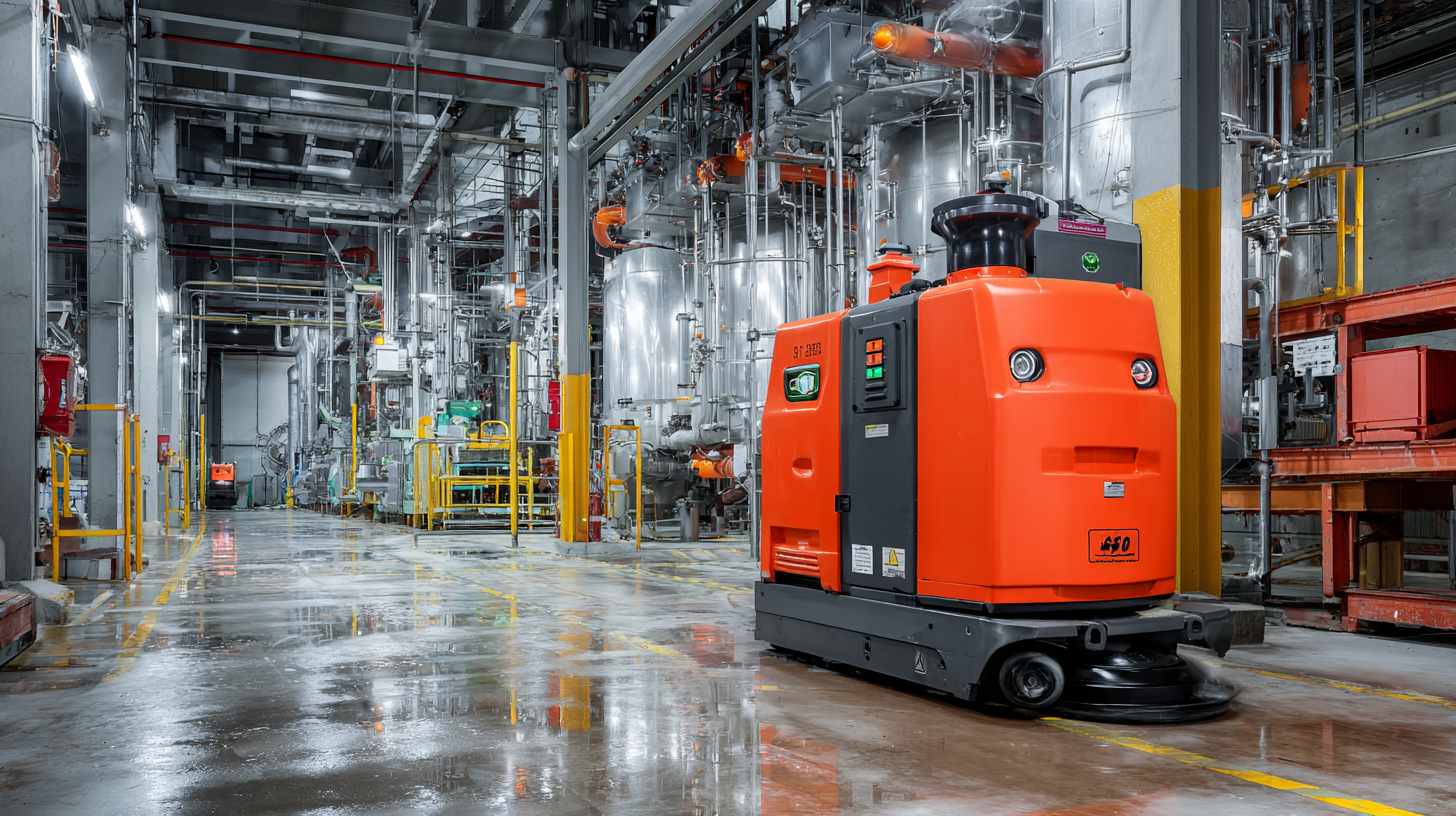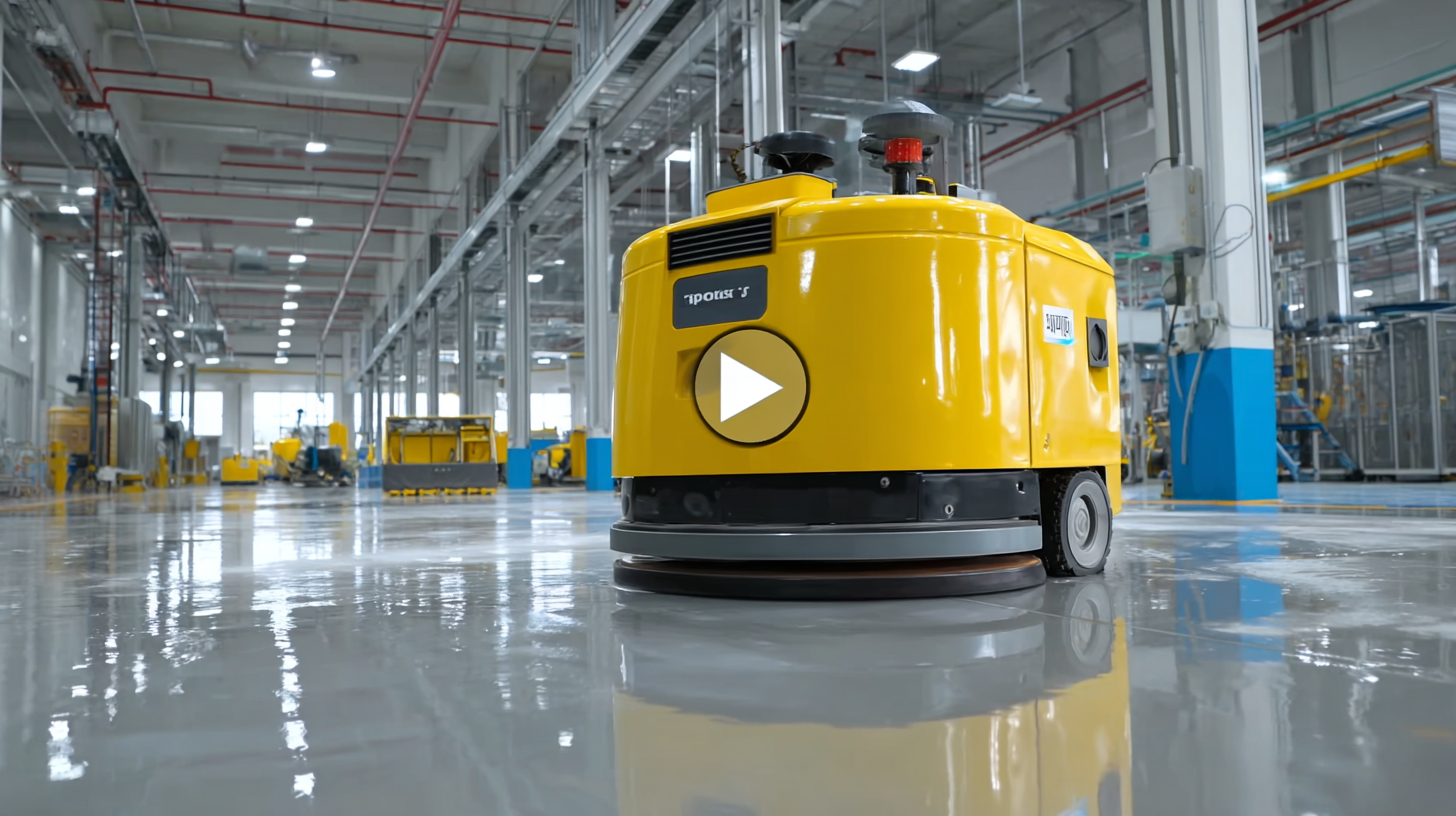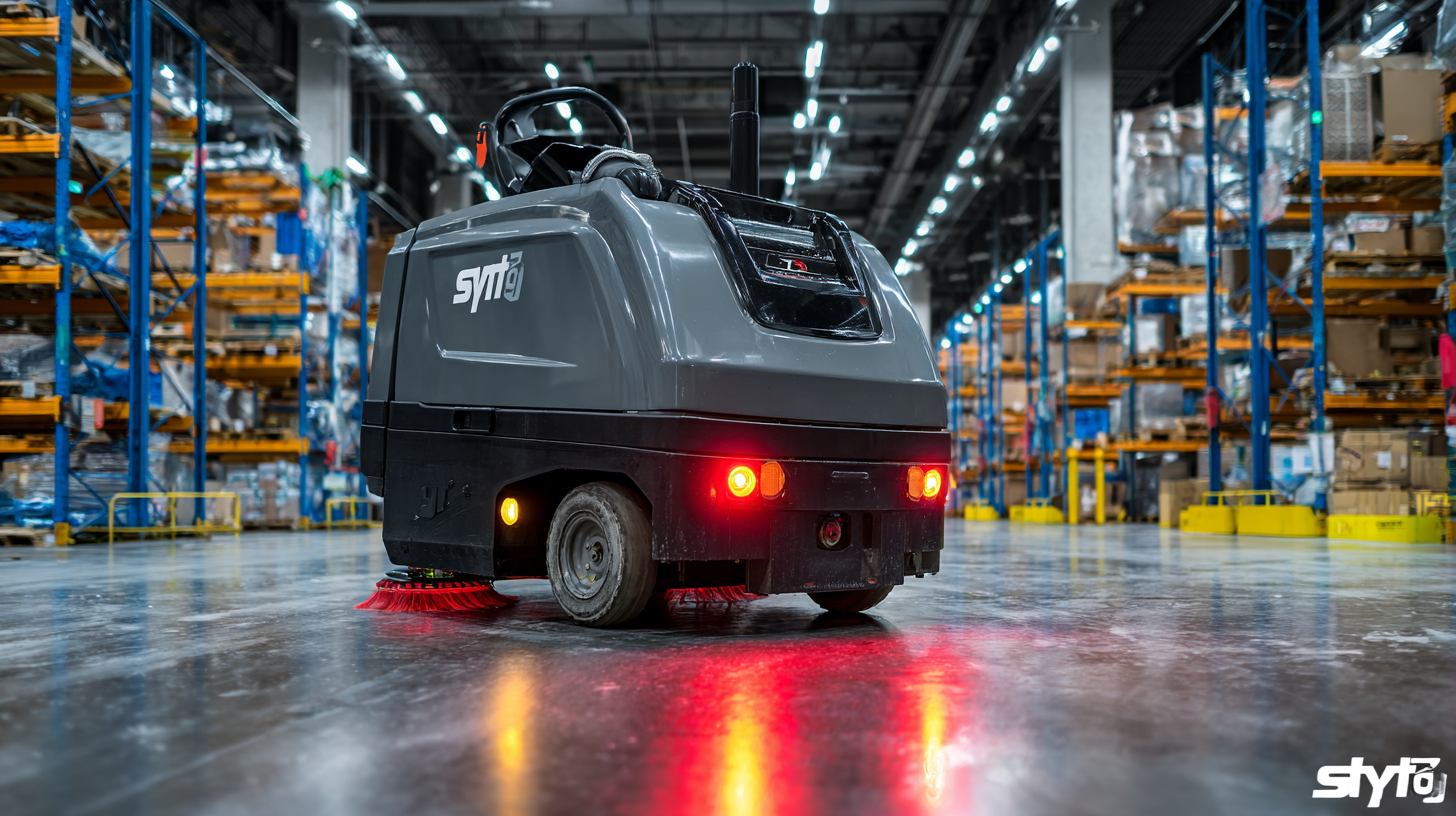Exploring Unique Examples of the Best Auto Scrubber Machine for Industrial Cleaning Efficiency
In the fast-evolving landscape of industrial cleaning, the quest for improved efficiency and effectiveness has led to the widespread adoption of advanced cleaning equipment, notably the auto scrubber machine. According to a recent report by Grand View Research, the global market for industrial cleaning equipment is projected to reach USD 36.88 billion by 2025, highlighting a growing demand for machinery that can enhance productivity while reducing labor costs.

Auto scrubber machines are at the forefront of this transformation, offering an innovative solution that combines scrubbing, drying, and effective waste management in one compact unit. As industries face increasing pressure to maintain high cleanliness standards while optimizing operational efficiency, the implementation of auto scrubber machines is not just a trend, but a crucial step in achieving sustainable workplace hygiene. This blog will explore unique examples of the best auto scrubber machines and their role in meeting industry production standards and best practices.
Key Features of Auto Scrubber Machines for Industrial Cleaning
When it comes to industrial cleaning, auto scrubber machines have revolutionized the way facilities maintain cleanliness and efficiency. These machines come equipped with several key features that enhance their functionality and make them indispensable in large spaces. One of the standout features is their ability to clean large floor areas quickly due to their robust design and advanced scrubbing technology. With powerful motors and adjustable cleaning settings, auto scrubbers can easily tackle tough stains and dirt, ensuring a pristine environment.

Another critical aspect of auto scrubber machines is their ergonomic design, which promotes ease of use for operators. Many models are designed with user-friendly controls and adjustable handle heights, allowing for comfortable operation even during extended cleaning sessions. Additionally, modern auto scrubbers come with automatic detergent dispensing systems, ensuring that the right amount of cleaning solution is used, thereby optimizing cleaning performance while conserving resources. These innovative features combine to make auto scrubber machines a vital asset for any industrial cleaning operation, elevating efficiency and productivity.
Comparative Analysis of Walk-Behind vs. Riding Auto Scrubbers
When it comes to maintaining industrial spaces, the choice between
walk-behind and
riding auto scrubbers can significantly impact cleaning efficiency.
 Walk-behind auto scrubbers are ideal for smaller areas or spaces with obstacles. They offer better maneuverability, allowing operators to easily navigate tight corners and congested zones. Users can benefit from this type of scrubber by ensuring they have proper training to optimize their cleaning patterns and enhance productivity.
Walk-behind auto scrubbers are ideal for smaller areas or spaces with obstacles. They offer better maneuverability, allowing operators to easily navigate tight corners and congested zones. Users can benefit from this type of scrubber by ensuring they have proper training to optimize their cleaning patterns and enhance productivity.
On the other hand, riding auto scrubbers excel in larger areas due to their higher cleaning capacity and speed. Operators can cover vast spaces quickly while providing consistent and thorough cleaning. Investing in a riding model is particularly advantageous in facilities such as warehouses or large retail environments where time is of the essence. To maximize the efficiency of a riding auto scrubber, regularly maintain the machine and ensure that brushes and pads are suited for the flooring type being cleaned.
Tip: When choosing between the two types, consider the layout and size of your workspace. Additionally, evaluate your staffing resources and how often cleaning is required. This analysis can lead to a more informed decision, ultimately enhancing cleaning efficiency and reducing operational costs.
Choosing the Right Auto Scrubber for Your Facility’s Needs
Choosing the right auto scrubber for your facility’s needs is crucial for optimizing cleaning efficiency. With a variety of options available, it's important to consider the specific requirements of your environment. For industrial spaces, heavy-duty auto scrubbers equipped with powerful suction and durable brushes are essential to tackle tough grime and large surface areas. Conversely, for smaller facilities, compact models can provide maneuverability without sacrificing cleaning power.
Understanding the types of flooring in your facility is equally significant. Different surfaces, such as wood, tile, and resilient floors, require distinct cleaning approaches and equipment. For instance, a robust scrubber may be necessary for tough commercial-grade tiles, while softer, more gentle options are better suited for delicate surfaces like wood. Additionally, assessing the frequency of cleaning and the desired drying time will help determine the most effective auto scrubber for your specific situation. By thoughtfully analyzing these factors, you can select an auto scrubber that not only enhances cleaning efficiency but also meets the specific demands of your facility.
Maintenance Tips to Maximize the Lifespan of Auto Scrubber Machines
Maintaining the efficiency and longevity of auto scrubber machines is crucial for optimizing industrial cleaning operations. According to a report by the Clean Trust, regular maintenance can extend the lifespan of these machines by 20-40%. Simple practices such as daily inspections, cleaning the squeegee and brushes after use, and checking the battery water levels can significantly impact performance. Ensuring that components are free from debris and that filters are cleaned regularly not only enhances functionality but also reduces wear and tear.
Additionally, it’s important to follow the manufacturer's guidelines for maintenance schedules. The ISSA (International Sanitary Supply Association) points out that the average lifespan of an auto scrubber can be around 5 to 10 years, depending on usage and care. By implementing a preventive maintenance program that includes routine checks and timely repairs, facilities can avoid costly breakdowns and ensure their machines are operating at peak efficiency. Investing in staff training for proper operation and maintenance can further mitigate risks and enhance productivity within the cleaning regimen.
Exploring Unique Examples of the Best Auto Scrubber Machine for Industrial Cleaning Efficiency - Maintenance Tips to Maximize the Lifespan of Auto Scrubber Machines
| Model | Cleaning Width (inches) | Battery Life (hours) | Water Tank Capacity (gallons) | Maintenance Tips |
|---|---|---|---|---|
| AutoScrub 1000 | 20 | 5 | 10 | Regularly check and replace brushes. |
| CleanTech 2000 | 24 | 6 | 15 | Clean water tank daily to prevent buildup. |
| MegaScrubber 3000 | 28 | 7 | 13 | Check battery condition weekly. |
| UltraClean 4000 | 32 | 8 | 20 | Lubricate moving parts every month. |
How to Optimize Cleaning Efficiency with Auto Scrubber Technology
Auto scrubber technology has revolutionized the way industrial facilities approach cleaning. By harnessing advanced features like automated cleaning paths and real-time monitoring, businesses can optimize their cleaning efficiency significantly. According to the Cleaning Industry Research Institute, facilities utilizing auto scrubbers can improve cleaning productivity by up to 30%, while also enhancing floor safety by reducing slip hazards. This level of efficiency is crucial in industries where cleanliness is not just a matter of aesthetics but also health and safety compliance.
When choosing the right auto scrubber, consider these key tips: First, evaluate your specific cleaning requirements and the type of flooring to ensure the scrubber is well-suited for the job. Secondly, prioritize models that offer eco-friendly cleaning solutions to minimize environmental impact while maintaining performance. Finally, don’t overlook the importance of operator training, as proficient use of the auto scrubber can lead to further boosts in cleaning efficiency.
Incorporating auto scrubber technology allows businesses not only to maintain pristine environments but also to reduce labor costs and operational downtime. A report from ISSA indicates that using such innovative cleaning equipment can lead to a substantial decrease in cleaning time, benefiting the overall productivity of the workforce while ensuring compliance with stringent cleaning standards.

